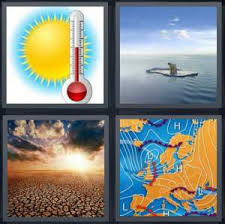So many of the incredible technologies and medical breakthroughs we enjoy today and are making our lives better have either been due to basic research done by the our Federal government or funded by it. Some of this has been done by the DOE (Department of Energy). The following is a very exciting example. If successful, the results of this project could have an enormous impact on our future and accelerate (pun intended) the transformation of our vehicle fleet from gas powered engines to electric.
“a pair of research projects, the DOE is betting that it can more than double the energy density of lithium-metal batteries and dramatically increase the speed of charging.”
“cars would essentially be able to travel 2.5 to 2.9 times farther without increasing the weight of their batteries.”
http://www.govtech.com/fs/Federal-Research-Aims-to-Knock-Down-Electric-Cars-Two-Biggest-Hurdles.html
Federal Research Aims to Knock Down Electric Cars’ Two Biggest Hurdles
Department of Energy-funded programs are looking to improve on both range and charging time for electric vehicles.
August 10, 2016
The U.S. Department of Energy thinks it can solve two of the largest obstacles standing in the way of the electric car.
Many experts have asserted that the limited range of modern electric vehicles and the amount of time it takes to charge the batteries are the primary reasons why they still make up a miniscule portion of the automobile market — less than 1 percent, according to HybridCars.com. But with a pair of research projects, the DOE is betting that it can more than double the energy density of lithium-metal batteries and dramatically increase the speed of charging.
The energy density project — which Pacific Northwest National Laboratory will lead in conjunction with eight other research institutions — is called Battery500. That’s because the project is aiming to pack 500 watt-hours of energy per kilogram into lithium batteries, compared with today’s average 170-200 watt-hours per kilogram. That means cars would essentially be able to travel 2.5 to 2.9 times farther without increasing the weight of their batteries.
The news comes in the context of a few companies standing poised to release fully electric cars in the next two years with the kind of range experts think the mass market can get behind. A 2013 survey from the California Center for Sustainable Energy found that 57 percent of electric car drivers wanted a range of at least 150 miles on a single charge; Tesla’s upcoming Model 3 promises 215 miles, and the Chevrolet Bolt will offer 200.
Doubling that range would mean either car could drive about as far as the gas-powered Toyota Camry, one of the best-selling cars in the U.S.
The Battery500 project will receive $10 million from the DOE every year for five years to conduct its research.
The fast-charging program, also funded through the DOE, is in an earlier stage. The White House announced July 21 that the department will seek to conduct a study by the end of the year on whether 350-kilowatt fast chargers are feasible. Such a charger, according to the announcement, would be able to charge a battery with 200 miles of range in 10 minutes — not much longer than a stop at a gas station.
That’s a big deal for the usefulness of electric vehicles too. According to aFebruary study from the University of Michigan Transportation Research Institute, battery-electric vehicles can keep up with gasoline-powered and hydrogen fuel cell vehicles for short trips but not long ones. Any trip of 250 miles or more in a battery-electric car might involve something like an hour of charging with a direct current level-two fast charger, while a gas-powered or fuel cell car wouldn’t have to stop at all during that time frame.
During a 1,000-mile trip — about the distance from Chicago to New Orleans, or New York to Orlando, Fla. — a battery-electric car might need five-and-a-half hours of charging.
“The implementation of DC fast charging has the potential to impact many technology areas and tackle key technological barriers associated with high-rate charging [50 kW and above], and fast charging increases the utility of [electric vehicles], aides in their adoption.”



